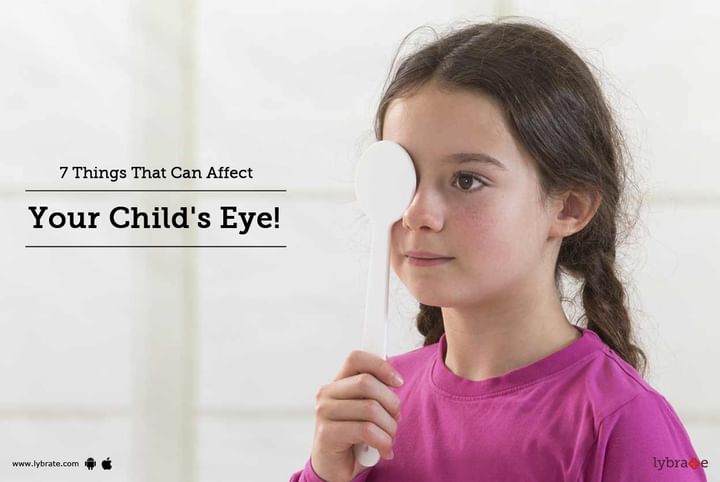7 Things That Can Affect Your Child's Eye!
A child’s sense of vision is constantly developing through infancy and childhood. At the same time, there are a number of diseases and eye conditions that may affect a child’s vision. The more common amongst these affect the child’s ability to focus and the alignment of the eyes. These include:
- Amblyopia or lazy eye: This condition refers to underdeveloped vision in one eye. It is a fairly common condition and may be caused by the misalignment of eyes. In such cases, both eyeballs look in different directions and are unable to focus on one object.
- Ptosis: In such cases, the upper eyelid droops and partially covers the eye thereby obstructing vision.
- Conjunctivitis or pink eye: This refers to a bacterial or viral infection that causes inflammation of the conjunctiva. It is highly contagious and characterised by an itchy discharge in one or both eyes and the reddening of the white part of the eye.
- Chalazion: Chalazion is characterised by the development of a small lump on an eyelid. This typically occurs as a result of the clogging of the meibomian gland.
- Stye: Styes are a common childhood occurrence. It is usually caused by an infected eyelash and appears as a sore, red lump on the eyelid edge.
- Preseptal or orbital cellulitis: Orbital cellulitis usually develops as a result of an eyelid infection or upper respiratory infection. It could also be the result of trauma. Some of the typical symptoms of this condition include redness of the eyes, swelling and pain around the eyes. The swelling may even keep the eye from opening completely.
- Blocked tear duct: If the tear duct is blocked, the risk of eye infection is greatly increased. As a result, the child’s eyes may water excessively.
In almost all cases of eye infection, the earlier it is diagnosed, the easier it is to treat and the less permanent damage it can cause. Hence, it is important to get your child’s eyes checked regularly by an ophthalmologist. Ideally, a child’s eyes should be screened at least once between the ages of six months to a year and between three to three and a half years.
Once they start going to school, their eyes should be checked at the slightest complaint of vision problems. This is because refractive errors such as near sightedness or far sightedness and astigmatism may develop at this age. In many cases, if a child wears corrective glasses in the early stages of such refractive problems, the condition may resolve itself.



+1.svg)
